To celebrate 40 years of the dominant GS, BMW has thrown a heap of upgrades at the R 1250 GS and we spent a week getting to know it
Nineteen eighty was the year of hairspray and perms worn by macho male rock bands who thought spandex was okay. The Jam were singing about going underground, ABBA was a Super Trouper, and The Empire Strikes Back was released, long before Star Wars got confusing with the arrival of Ewan McGregor.
In amongst this madness, BMW launched the very first shaft-driven R 80 G/S. Capable both off-road and on, as happy on motorways as it was on dirt roads, it catered to a whole new motorcycle market. And since creating this new sector, BMW has dominated it, evolving the GS over four decades.

The greatest compliment is to be copied, and other manufacturers soon followed in the footsteps of the GS, but only in the last decade has the GS’s crown been wobbled by a wave of new and powerful bikes from KTM and Ducati. The Japanese manufacturers have also jumped into this most profitable sector with attractive, cost-effective bikes.
In the face of growing competition, BMW has been forced to up its game, which leads us nicely onto the new R 1250 GS – 40 Years GS Edition model, celebrating four decades of the GS. This is the most advanced and luxurious GS to date, with new rider modes, updated tech, now a six-axis IMU instead of five, adaptive headlights, as well as updated heated seats and grips.
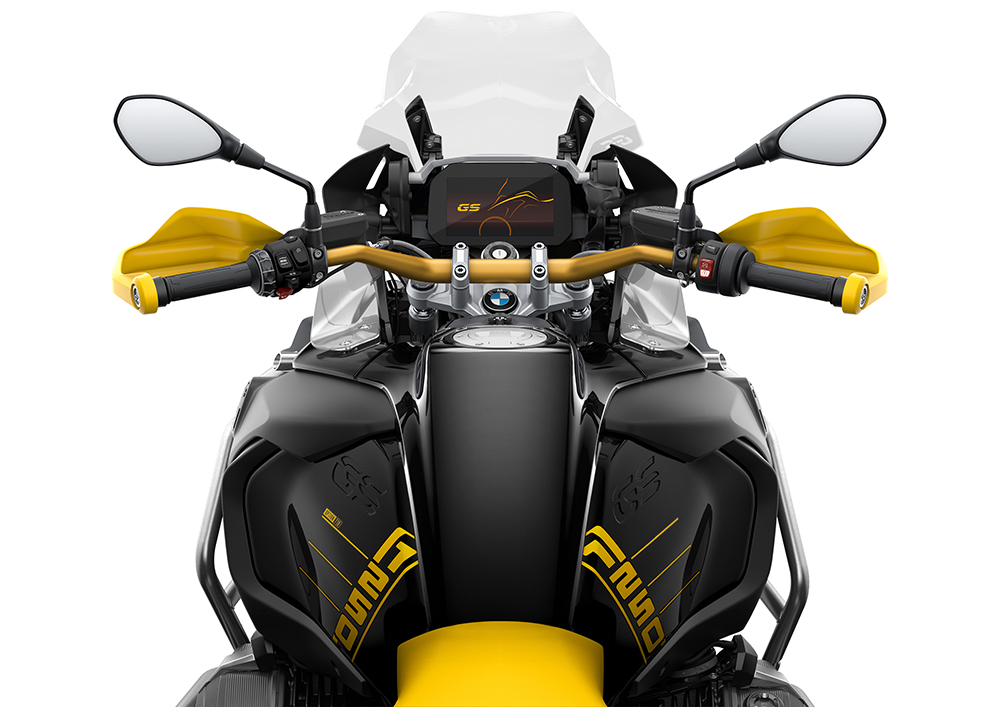
Do you remember when you just threw a leg over a bike, turned a key, pressed the starter button and that was it? I rode an original GS on a recent trip to the BMW factory in Munich, and revelled in the simplicity of analogue clocks – remember those? – and no rider aids. Now, for 2021, this is the most advanced GS to date, and comparing the Anniversary model to the original is like comparing a passenger jet to a biplane.

BMW has thrown the accessories catalogue and a host of clever gadgets at the updated GS. The unique adaptive headlights are all-new. Cornering headlights are nothing new, but most competitor systems simply illuminate an extra light when cornering, while the BMW system actually moves and pivots the bulbs and their beams. The adaptive headlights are linked to the new IMU, which measures lean angle, for example, and therefore knows how far over the bike is and therefore how to angle the headlight. The headlights will even adjust depending on the weight on the rear of the bike, dipping slightly when you add a pillion and luggage.

The IMU has been uprated, and now takes readings from six axis rather than five, which allows more advanced rider aids and unique features like the new Hill Assist Pro, which detects the gradient. The DTC (Dynamic Traction Control) uses the new IMU to calculate the difference between wheelspin and a wheelie, or ‘lift-off suppression’ as BMW call it, meaning that in the Dynamic Pro and Enduro Pro modes, when you pop the front wheel up, you still have some traction control – something which wasn’t possible on the old bike.
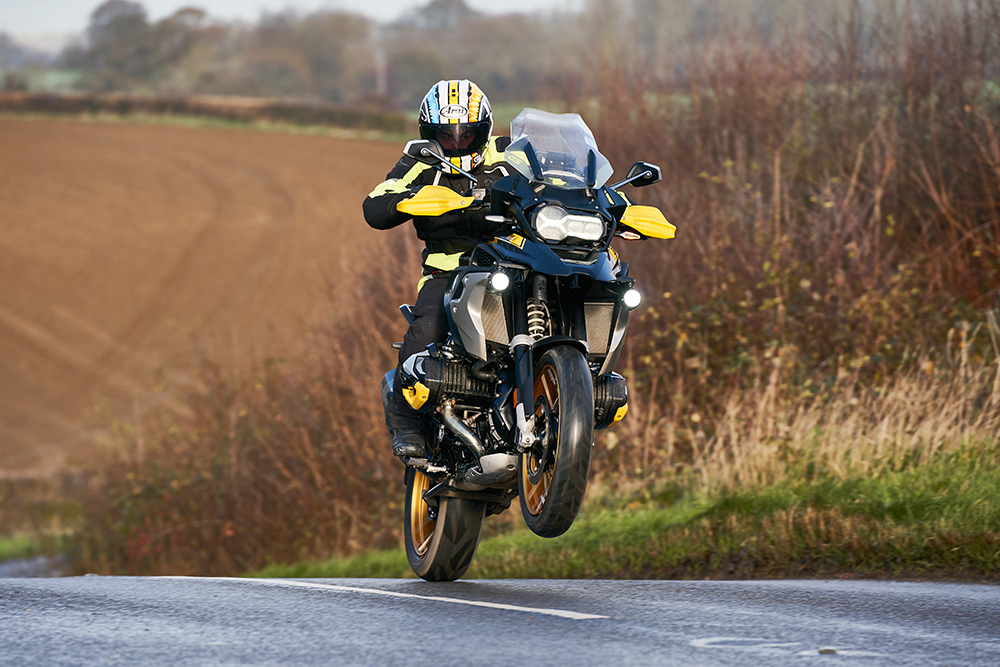
You now have seven riding modes to choose from, plus a new Eco mode as well as Dynamic Pro and Enduro Pro modes as standard, both of which allow you to personalise or deactivate the rider aids. However, now the system knows the difference between a wheelie and wheelspin, I’m unsure why you’d want to de-active the very clever traction control, unless off-road.
The Eco mode is new for the Anniversary model and restricts power to 73.5kW and 109Nm of torque, which is a significant drop from the peak power of 100kW and peak torque of 143Nm in a bid to improve fuel economy.

Aside from the obvious yellow and black livery which harks back to the original GS, there are some neat little touches like the gold-anodised spoked wheels and yellow handguards that come as standard on the Anniversary GS. Heated seats for both rider and pillion are now available, something disgruntled pillions have been asking for for years, which is why our model didn’t have the original-equipment yellow-coloured seat. There are heated grips obviously, but now updated and are five-way adjustable as per the optional heated seat.
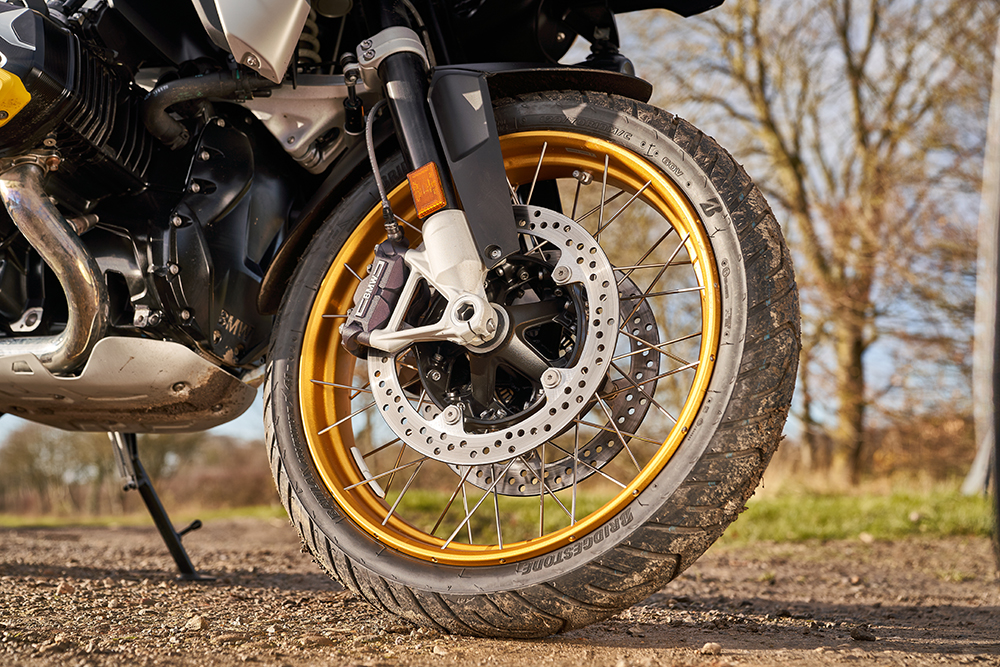
As with every BMW, it’s easy to get carried away ticking the accessories. The great thing about BMW Australia is it tends to do a bit of that ticking for you and offer things as standard fitment that would otherwise be optional in other markets.
Take the so-called Shadow Billet Pack for example, with its anodised and milled mirrors and levers – that’s already standard in Aussie showrooms. As is the Akrapovic silencer and chrome exhaust pipe, and the additonal LED fog lights. The only things fitted to this bike that you’ll need to tick a box for is the Intelligent Emergency Teleservices – arguably well worth the asking price – and the heated rider and pillion seats. The whole yellow-and-black shebang will set you back $35,870 plus on-road costs. It’s a class-leading bike and on par, price-wise, with Ducati’s new Multistrada V4 S in similar spec. I was thankful of the extra accessories, especially the heated seat, as winter seemed to take over as soon as I took delivery of the GS. The five-tier range of both is almost too good. Even when the temperature dropped to zero, the heated seat set on maximum was almost too much…
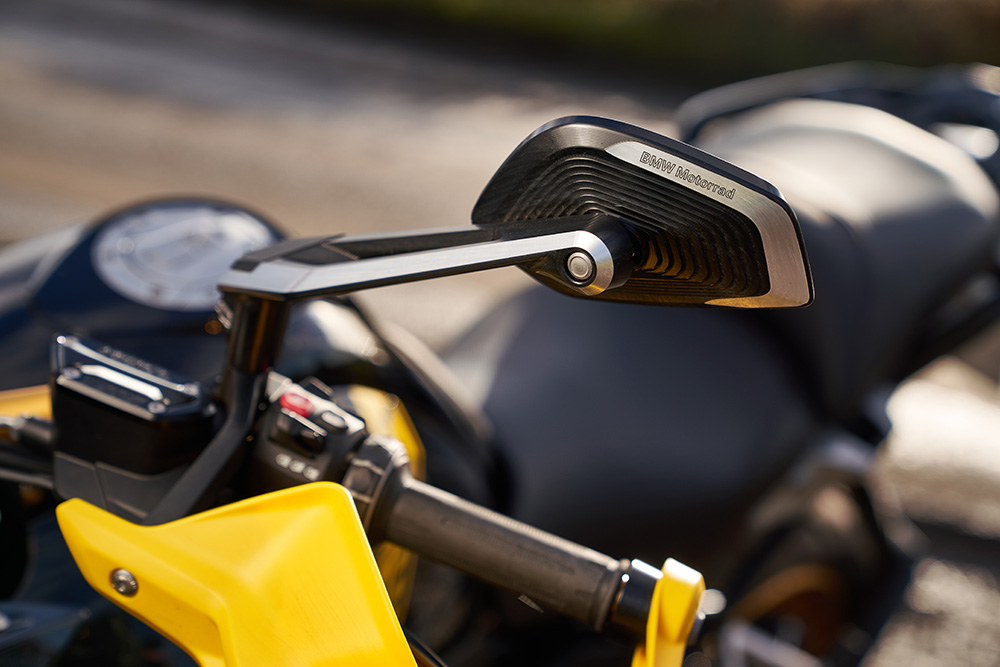
I’d not ridden a GS for a year, and despite my experience I’d forgotten how good it is. The ShiftCam boxer engine is a peach, with so much torque and perfect fuelling. Power and torque are unchanged and more than enough, while the riding position and ergonomics feel like they were made for me. I did 480 kays-plus on one day without any body parts complaining, reminding me that this is a true globe trotter. In fact, all the class-leading points remain of the current GS, but now the Anniversary model offers a little more.

First the looks… the standard Anniversary model comes with a yellow seat and yellow sports screen, though our accessorised test model came with the heated stepped black seat and clear screen. I posted a few pictures on social media, and the results were mixed. Personally, I like the distinctive yellow, especially the anodised wheels, but others weren’t so complimentary.
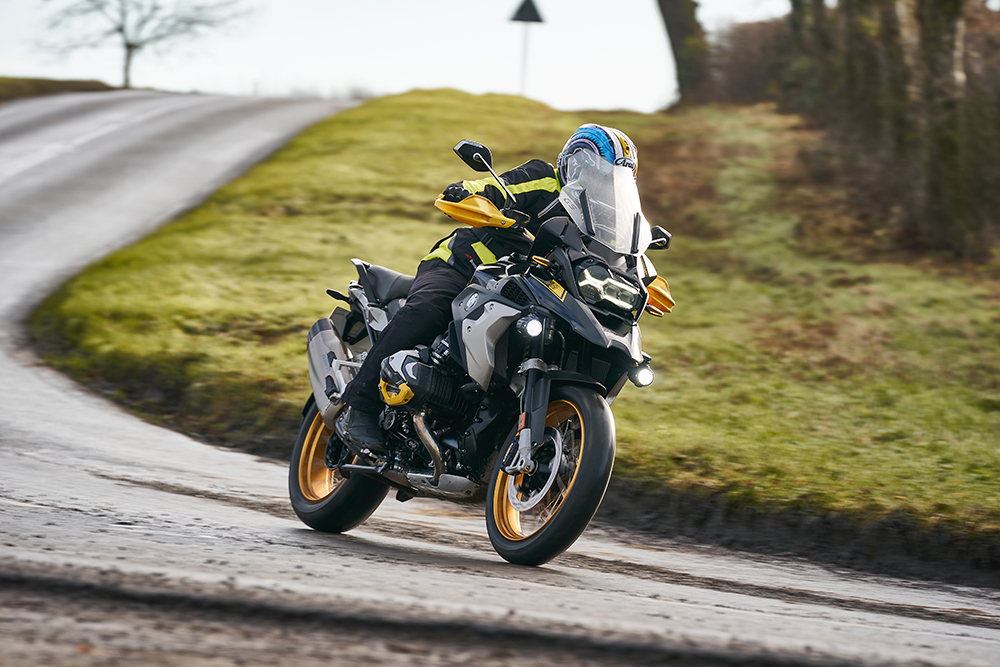
Next up the tech. There are even more gadgets to play with and even more information and buttons, but again BMW has made it all relatively simple to comprehend and the huge full-colour screen is accessible, relatively easy to navigate, and stunning to look at. It’s like having a full-colour TV screen at your fingertips. The font is clear and, as a former BMW owner, I know that initially daunting navigation wheel on the left bar soon becomes second nature.

I don’t know of any other bike (that’s not a BMW) which gives you as much information, so clearly and simply. Other manufacturers’ bikes have large dashes, but the BMW offers menu upon menu of data and advice, plus you have the integrated Sat-Nav as an optional extra if you want it. After a full day in the saddle everything quickly becomes intuitive, including switching between riding modes, increasing the level of heat or setting the cruise control. The only downside is that the switchgear isn’t backlit, which makes it hard work at night when you are not yet familiar with every button, and is something Ducati and other manufacturers have addressed.
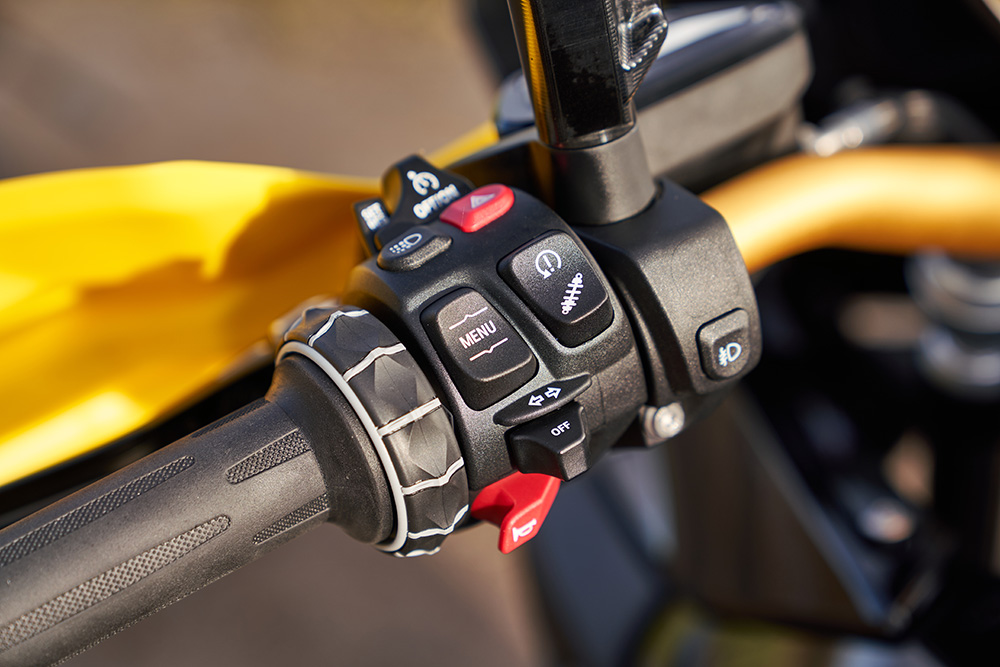
As mentioned, the Eco mode is a new fuel-saving edition that limits power and softens the delivery. When you flick into the Eco mode a small gauge appears in the top right of the screen that shows how economically you are riding.
This guide, and the reduced power, helps to improve fuel efficiency and obviously increase range. I rode at a brisk pace on motorway and country lanes and averaged 4.8L/100km in the standard road mode. I repeated the same task on similar but not identical roads in Eco and averaged 4.4L/100km. Okay, not the most scientific of tests (it’s also worth noting that above 130km/h, you’re off the radar and apparently not riding economically enough to register with the Eco gauge) but if you stay within the gauge and ride smoothly, you certainly achieve an improved consumption figures and fuel range. Being restricted to 100hp isn’t great and you have to make sure you judge overtakes accordingly. I confess that I ended up in a panic while attempting a quick overtake of several cars – having forgotten I was in Eco mode.
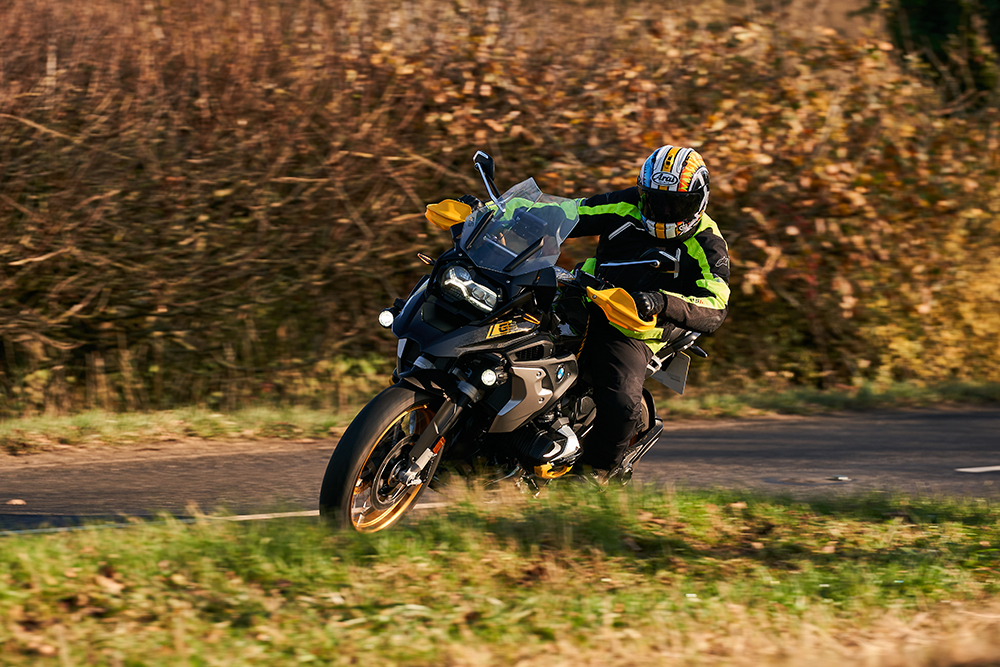
The Dynamic Pro mode is at the other end of the spectrum with full power and rider aids, such as the rear ABS, deactivated or reduced and the facility to personalise settings within it. The system can now calculate the difference between a wheelie and wheelspin, and although you could argue that no one wheelies a BMW R 1250 GS on the road, off-road it’s easily done and fun. On the road I prefer a small and controlled lift over rises and crests, rather than the rider aids dramatically cutting the fuelling and sending me smashing against the fuel tank.

And the new system works well: the TC jumps in when the rear starts spinning (easily done in the conditions we encountered on test) especially when leaving a dirt track and riding onto a smooth road again. But over crests and off-road the front wheel lift was controlled by me and not a far-too-clever computer. For experienced hands, this adds another string to the bow of the GS and makes it more rideable and rewarding than ever. But if that’s not your bag, in every other mode the front lift is controlled, and, of course, you can personalise the Dynamic modes to your taste anyway.
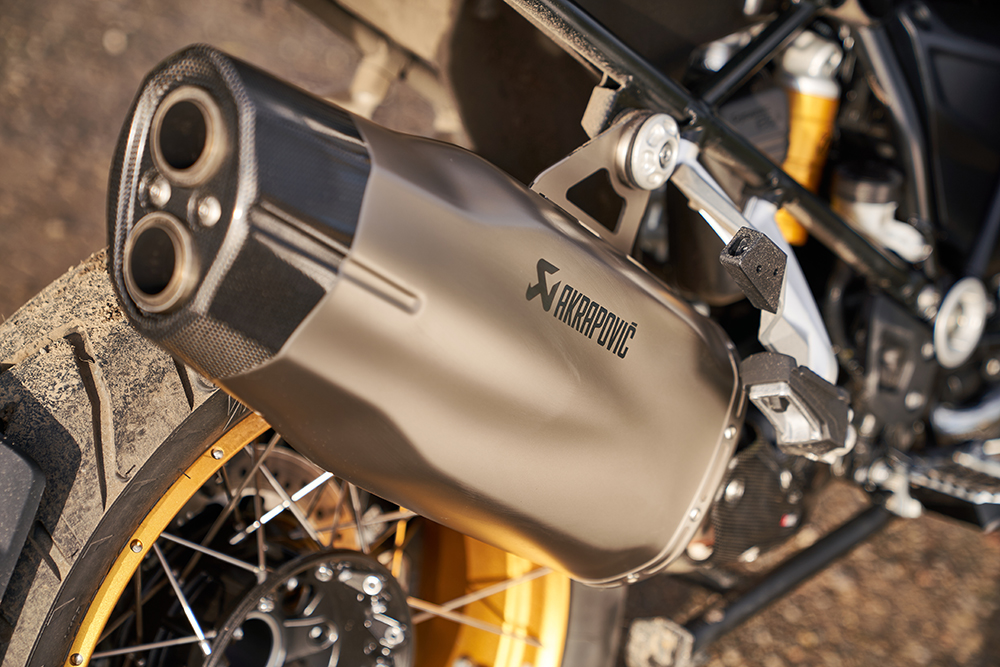
As impressed as I was with the new riding modes and rider aids, none of them come close to the stunning adaptive headlights, which are so good I have to question why they haven’t been adopted before. The lights on a GS have always been exceptional, but now they are on a different level. You roll into a corner, and the lights gradually roll with you, projecting into the bend rather than directly ahead into, say, an empty field. The adaptive headlights are exceptional when riding aggressively. I was purposely braking as late as I dared yet even in the softest semi-active suspension mode the front lights stay level, and even tilt upwards slightly. Same on the power… When I grabbed a big handful of throttle in first gear – TC light flashing, rear shock squatting and any normal headlight likely to go looking for low-flying aircraft – the adaptive system simply dips to illuminate the road ahead.

In winter in the UK you really need off-road biased rubber, like the Metzeler Karoo 3, which is an option on the GS. The standard Bridgestone A41 is okay on dry gravel and hard-packed off-road surface, but were never designed to take on wet, sloppy mud. The specific Enduro Pro mode is also designed to work in partnership with off-road biased tyres.

We did manage to find some relatively dry hard-packed sections and from experience I know how good the big GS is off-road. Don’t be put off by the size and weight of the GS, the Boxer engine gives the bike a lovely balance at low speed and rider aids are there to help out. Do, however, change the rubber if you’re determined to get muddy or opt for dry open fire tracks and enjoy the enhanced rider aids which give you more freedom.

It is hard to fault BMW’s R 1250 GS in whichever option you decide. The top-spec R 1250 GS – 40 Years GS Edition isn’t a huge leap forward over the old bike, more of a step. If you’re happy with your GS, stick with it, just don’t test ride the updated model. The problem is, once you’ve had a taste of the gadgets, it’s hard to step back. In tricky commuting conditions, I ended up using the Eco mode more than any other riding mode, saving fuel and increasing the range. The new rider aids (care of the new IMU) are a nice touch, and the adaptive headlights are very clever, certainly an improvement, and personally I like the yellow spoked wheels too.
If you own a GS you will probably be tempted to test ride the Anniversary model simply to sample the new gadgets. Warning: don’t do it, otherwise you might end up trading in. The original and arguably the best, just got better.
